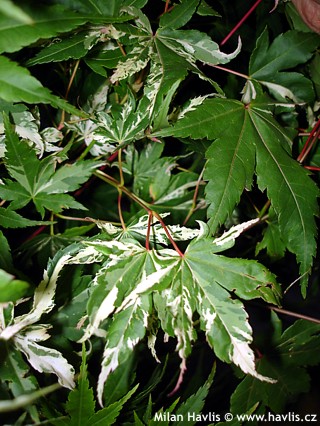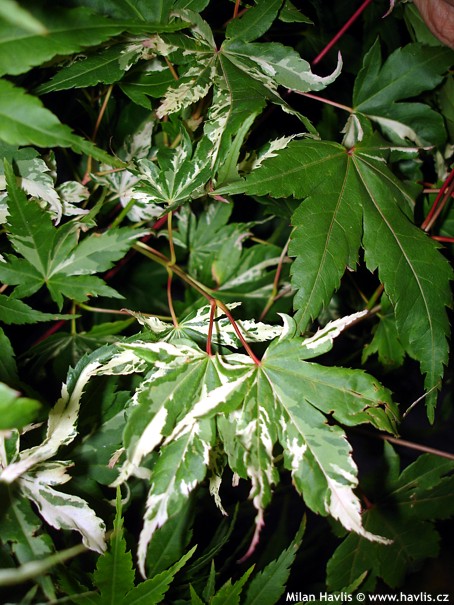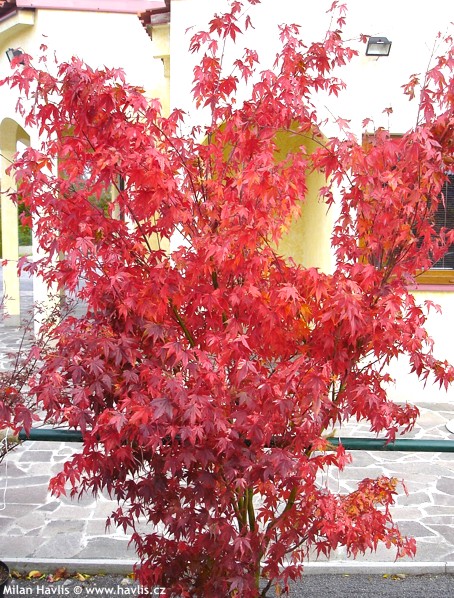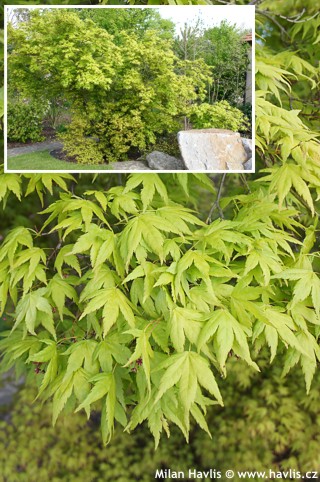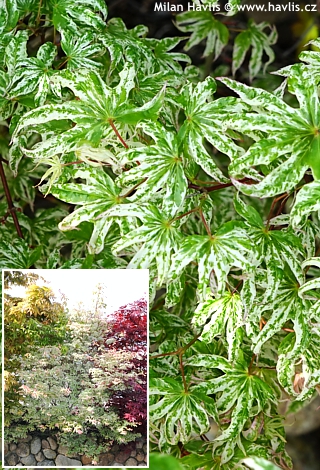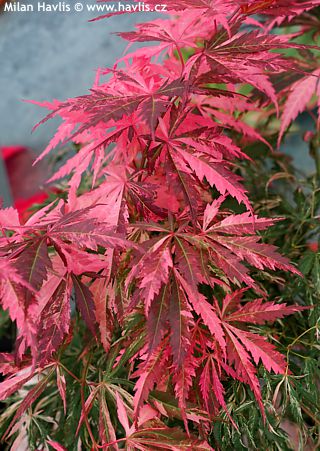Acer palmatum 'ASAHI ZURU' Japanese maple
size/type
medium-sized shrub,medium-sized shrub
usual height
1,5-2,5m
usual width
1,5-3m
leaves
deciduous broadleaf
colour of leaves
flowers
insignificant or non-blooming
location
full to partial sun
soil type
acidic (peaty)
soil moisture requirements
evenly moist (dislikes drought)
USDA zone (lowest)
5 (down to -29°C)
winter protection
for zone 5+6

for zone 7

categorized
Acer
Japanese maples are very decorative and usually low shrubs, occasionally small trees, with attractive foliage and picturesque structure. There are many varieties in various shades of green, chartreuse, golden and yellow, red to maroon, and even multicoloured (variegated). They originate from Asia (Japan, China, Korea), where they have been cultivated for at least two centuries or perhaps even longer, however, they were introduced to Europe only at the beginning of the 19th century, specifically to Great Britain in 1820. Interestingly, the botanist Carl Peter Thunberg described them much earlier, in 1784, because he undertook an expedition to Japan in 1775-1776, discovering new species and collecting seeds and plants. He named the tree Acer palmatum, referring to the leaf shape resembling a human hand with fingers, although it is said that they first reminded him of frog fingers, which is also one of its oldest Japanese names: kaede. The other is momiji (baby hands). The beauty of the colours and shapes of the leaves and trees is reflected in many arts, for example, in the oldest preserved collection of Japanese poetry from the 8th century, the Man'yōshū (Collection of Ten Thousand Leaves). The Chinese poet Wang Wei (699-759) celebrated their beauty in many of his works, and naturally, maples often appeared in ancient paintings, tapestries, porcelain, and wherever classic and traditional decorations associated with the symbolism of these maples were desired: beauty and elegance, serenity, endurance, vitality, and transformation.Description of the plant:
Fancy having a Japanese maple named The Rising Sun in your garden. Even the name itself evokes a calm Japanese style be it in a true Japanese garden or any other garden style where you simply love to have a Japanese maple. Asahi Zuru, that is the original name, is a rare variety with irregular foliage variegation. Most of the leaves are solid green as on usual acer palmatum but on some branches, could be anything from 20-70% of the plant, the leaves are finely blotched with creamy white and pink variegation. The overall appearance is very interesting and adds a little bit of drama to your garden design. Still, much more drama can be expected in autumn when all leaves turn brilliant red and when the sun shines through them you just can´t help awing.
It grows slowly into an open V shape, getting wider than tall with age. Grow in either in full sun with if the soil is kept constantly moist or in half shade. Japanese maples prefer acidic to neutral soil, moist but well drained, semi-fertile. Mulch it well. Fully hardy to about -27°C (USDA zone 5).
Last update 20-10-2010
QUICK PRICE OVERVIEW
CURRENTLY SOLD OUT












